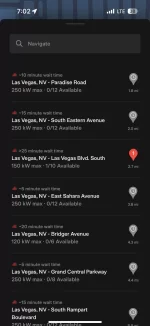- Joined
- Dec 3, 2022
- Messages
- 920
- Reaction score
- 600
- Location
- Visalia, CA
- Cars
- Lucid Air Grand Touring
- Referral Code
- ZAJRISAL
That sounds reasonable that the car has to be designed to take advantage of 277V AC.The problem is not the plug per se, but what voltage a car can accept. Yes, Tesla can accept 277V. I've done this before on my old 2012 Model S – but it was actually a J1772 EVS with J1772 plug using a Tesla J1772 to NACS adapter. The J1772 plugs are rated for 240V typically as per the standard, but the Max current is more of a factor. I would be curious to see how a Lucid would handle the 277V on a J1772 plug.
That means higher AC charge might be possible for the next generation of newly designed cars.


